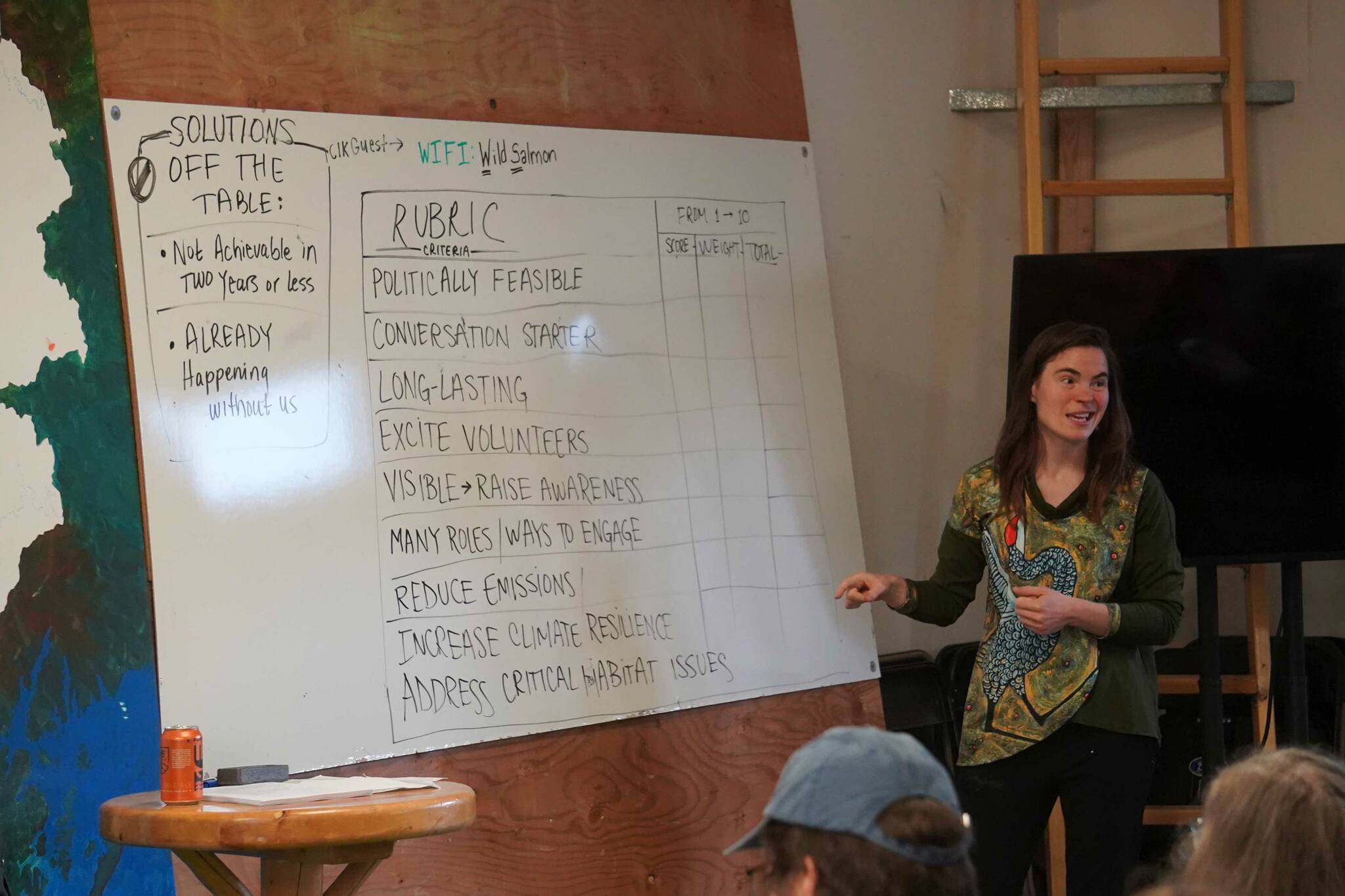Cook Inletkeeper’s next central Kenai Peninsula local solution project will center on locating and raising awareness of the streams where salmon spawn.
That’s after the second local solution meeting hosted by the group in their Community Action Studio in Soldotna on Thursday, March 20. There were four projects that emerged as possible candidates for implementation this year, and each were presented to attendees who later voted for their favorite.
The “Local Solution” program is a model used repeatedly by Cook Inletkeeper to design and implement projects in the local area within two years. Previous solutions implemented by Cook Inletkeeper on the Kenai Peninsula include a community composting project that kept more than 60,000 pounds of food waste from Central Peninsula Landfill; “Solarize the Kenai,” which added new solar energy capacity to 142 local households; and “Project ReTree,” which planted more than 3,000 trees in areas impacted by the spruce beetle outbreak.
While the initial plan for Thursday evening was to name a winning project for implementation, a tied vote and group discussion led instead to an idea combining two of the four — while also implementing ideas from each presentation.
Over the coming weeks, presenters and Cook Inletkeeper staff will work on “how to combine aspects of these projects into one mega salmon habitat project,” before another meeting on April 29 to start hashing out the details of implementing the project.
There were nine votes each cast for a project that would design and install signage noting “baby salmon live here” and for a project that would seek to study and nominate local streams as critical salmon habitat worthy of certain legal protections.
Mitch Michaud presented “the Baby Salmon Live Here Project.” Baby salmon, in fact, live everywhere, Michaud said. The idea is to design educational signage that would teach residents and visitors about the fish in that stream, identify local conservation sites and more. Michaud said he was speaking for other group members who weren’t able to attend on Thursday, but suggested the use of QR codes to both facilitate information and create a “geocaching” feel.
He envisions scanning a code and seeing a video of people explaining that stream bank, accompanied by information about local grant-funded restoration efforts in the stream.
“We’re not just teaching them about baby salmon,” he said. “We’re teaching about everything that’s happened so that they have an appreciation of ‘why is this here and why are people telling me I can’t be tromping in the bushes.’”
Ben Meyer was one of the presenters for salmon stream mapping. The project, he said, would be a significant expansion of work he’s been involved with in recent years as part of the Kenai Watershed Forum. The project is intended to map streams where fish spawn and nominate them as salmon habitat. At the state and borough level, the legal assumption is that water isn’t salmon habitat unless it can be proven to be. If they can prove that local streams are salmon habitat, they benefit from various environmental standards and legal requirements.
“You can’t conserve habitat if you don’t know it exists.”
As a local solution, Meyer said, Cook Inletkeeper could turn out a larger number of volunteers able to map much more stream in the next two years than he could on his own.
There were two other projects, which weren’t selected but from which some ideas are planned to be integrated. The first would have developed a network for reporting possible sightings of invasive species like pike or elodea. The second would have created an education campaign using platforms like YouTube, Facebook, and the Soldotna Wednesday Market to educate about local fish habitat.
For more information, find “Cook Inletkeeper” on Facebook.
Reach reporter Jake Dye at jacob.dye@peninsulaclarion.com.

